| At a Glance | |
|---|---|
| Product | Amazon Fire Stick [Website] |
| Summary | Compact version of Amazon Fire TV media streamer |
| Pros | • Dual band wireless (N600) • Supports voice search • Arrives pre-registered to your Amazon account for simple setup |
| Cons | • Voice search only works for Amazon Prime and Hulu Plus & requires app or optional remote • No support for DLNA media servers • No iOS remote app (yet) • Popular channels like HBOGo, TED, Picasa and VUDU currently not available |
Introduction
This April, with the introduction of the Fire TV, Amazon jumped into the media streaming hardware market with both feet. It seemed like for weeks that you couldn’t turn on your TV without seeing an Amazon ad featuring Gary Busey demonstrating, in his own inimitable style, the Fire TV’s voice search feature. I reviewed the Fire TV and concluded the voice search feature worked well, but the streamer definitely pushed Amazon products.
On October 27, Amazon announced its second media streamer – the Amazon Fire TV Stick. I ordered one on the day it was announced, but finally received it on November 30th. Still, that was an improvement over the originally scheduled delivery date of December 11th. (The Stick is sold out through the Holidays this year.)
The Amazon Fire TV is a high end streamer designed to compete with the Roku 3 and Apple TV. The Fire TV Stick has a dongle form factor and is designed to compete with the Roku Streaming Stick, and, to a lesser extent, Google’s Chromecast. Amazon’s web site provides a comparison of how they feel the Stick stacks up against the competition. Bear in mind that the chart is Amazon’s marketing material, but the top level data contained within the chart appears to be correct.
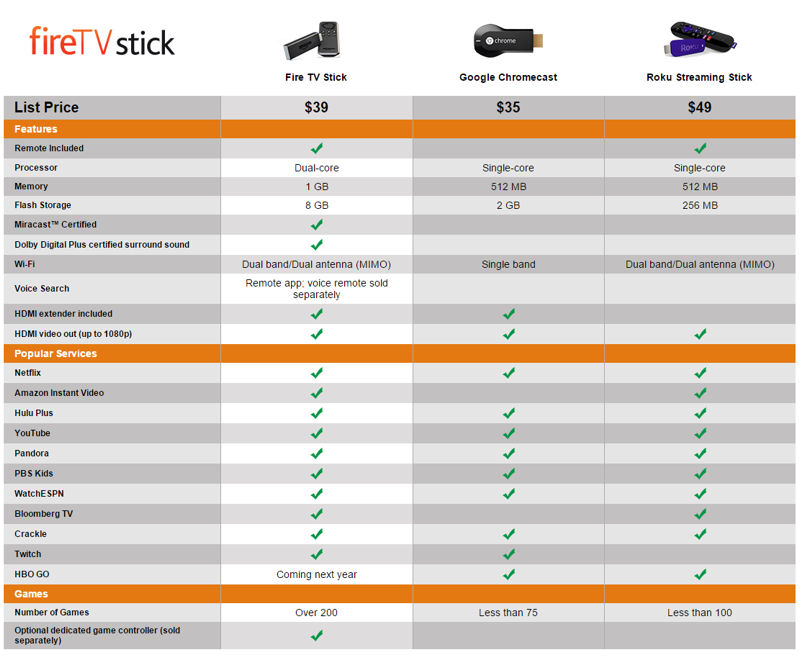
Amazon’s comparison of its Fire TV Stick to the competition
The Fire TV Stick is a plain, black rectangular stick with a matte finish that has an HDMI connector on one end. On the top side, there’s a micro USB port for power. I’m not sure that the is the best location for the power connector, as, depending on the layout of the HDMI ports on your HDTV, the power cable might block adjacent HDMI ports, or, at a minimum, might cause you to re-arrange the inputs for multiple devices. By comparison, the micro-USB ports on the Chromecast and Roku Streaming Stick are located on the end where they won’t interfere with adjacent HDMI ports.
The Fire TV Stick is devoid of LED indicators to provide status and connection information. Since it is in a stick format, you also give up the Optical audio, wired Ethernet and USB ports (currently not used) found on the rear panel of the Fire TV.

Amazon Fire TV Stick dimensions
The included remote is very similar to the remote included with the Fire TV. The only difference is the Stick’s remote lacks a microphone and “push to talk” button. But the Fire TV Stick is fully compatible with the Fire TV’s remote and supports the voice search feature. Amazon sells the voice remote for $29.99, but that drives the total cost of the package up to ~ $70.
Some of the consumer reviews on the Amazon site felt that Amazon should have a separate SKU which packages the Fire TV Stick with a voice remote. I agree. It doesn’t really make too much sense to purchase a $39 device only to spend $30 more for a single feature and end up with a useless spare remote.
The remote for the Fire TV Stick, like the remote for the Fire TV, uses Bluetooth to communicate, so direct line of sight, needed by IR controllers isn’t necessary. This makes the Fire TV, as well as the Roku Streaming Stick, which uses Wi-Fi Direct wireless technology, ideal for squirreling away in an equipment rack. As noted in the Fire TV review, I found the ring navigation with the center select button easier to use than the remote for the Roku 3 which has four directional buttons with the “OK” key located below the navigation keys.
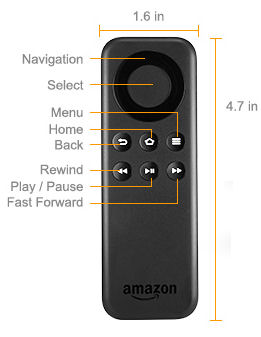
Amazon Fire TV Stick remote callouts and dimensions
In the Box
The image below shows what you receive in the box. Included are a small, square 1 A USB power supply, 5 foot USB cord, remote, batteries for the remote, Fire TV Stick, HDMI extender cable and a quick start guide.
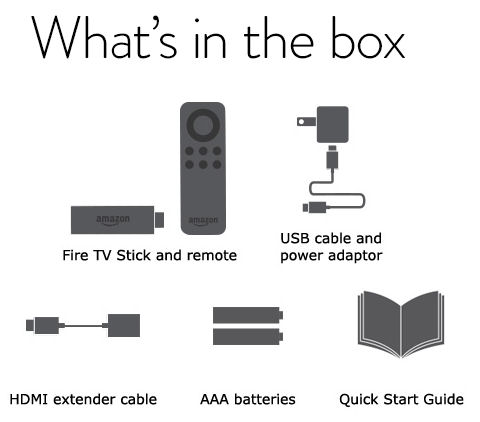
What’s in the box – Fire TV Stick
Inside
The cases on both the remote and the Fire TV Stick appeared to be sonic welded together, so it was impossible to open the cases without destroying the pieces. The FCC ID docs are under short term confidentiality until 4/25/2015. So here are the FCC IDs for the Stick and remote if you want to check then.
- Fire TV Stick – 2ABDU-0509
- Fire TV Remote – 2ABDV-0929
As with the Fire TV, Amazon is very open about the components that they used to make the Fire TV Stick. The table below shows major components of the original Fire TV and the Fire TV Stick taken from the developer specs. Both platforms support the same media technologies and formats, which are listed on the developer spec page and the media spec page linked from it.
| Amazon Fire TV | Amazon Fire TV Stick | |
|---|---|---|
| SOC Platform | Qualcomm Snapdragon ARMv7 | Broadcom BCM28155 (Capri) |
| Processor | Qualcomm Krait 300, quad-core to 1.7 GHz (APQ8064) | Dual-core 1 GHz Cortex A9 |
| GPU | Qualcomm Adreno 320 | Broadcom VideoCore IV GPU/VPU (Capri VC4 device) |
| Storage | 8 GB internal | 8 GB internal |
| Memory | 2 GB LPDDR2 @ 533 MHZ | 1GB (512MB system, 512MB video ) |
| Wi-Fi Connectivity | Dual-band, dual-antenna Wi-Fi (N600 class) | Dual-band, dual-antenna Wi-Fi (N600 class) |
| Bluetooth | Bluetooth 4.0 with HID, HFP 1.6, SPP profile support | Bluetooth 3.0 with HID, HFP, SPP profile support |
Key components
Setup
There’s really not much to set up with the Fire TV – hence there’s a very short Quick Start Guide. It’s a short five step process:
- Connect the included USB cable to the power adapter and to the Fire TV Stick. It was nice that the included micro USB cable was 5 feet long – probably long enough to reach the floor for a wall mounted HDTV. Be sure to use the provided power supply. Though some HDTVs have USB ports, many of them are only USB 2.0 which limits the current to 500ma. The included power supply is rated for 1 amp.
- Plug the power adapter into the wall
- Plug the Fire TV Stick into an available HDMI port. You might want to use the HDMI extender cable to improve accessibility or to improve the Wi-Fi reception
- Turn on the TV and select the HDMI port corresponding to the one you used for the Fire TV Stick
- Insert the batteries into the remote.
From here, you just follow the on screen prompts. First, the Fire TV Stick will try to pair with your remote, so be sure to have your batteries installed. Next, since the Fire TV Stick is a Wi-Fi only device, you’ll select your own wireless network and enter your wireless password.
Once a connection with the Internet has been established, the Fire TV Stick will check for updates and ask for confirmation to use your Amazon account. You have the option of logging in to a different account. Though it’s a nice convenience to have the Fire Stick pre-registered, I worry that there might be some security issues if you purchased the device as a gift.
Next, it checks the speed of your network connection and then presents you with a brief animated tutorial. Finally, you are given the option of enabling parental controls. Though this paragraph covers the setup, some may feel a little more comfortable seeing screen shots of the setup process. Every step of the Fire TV Stick setup process is covered in Gallery 1 below:
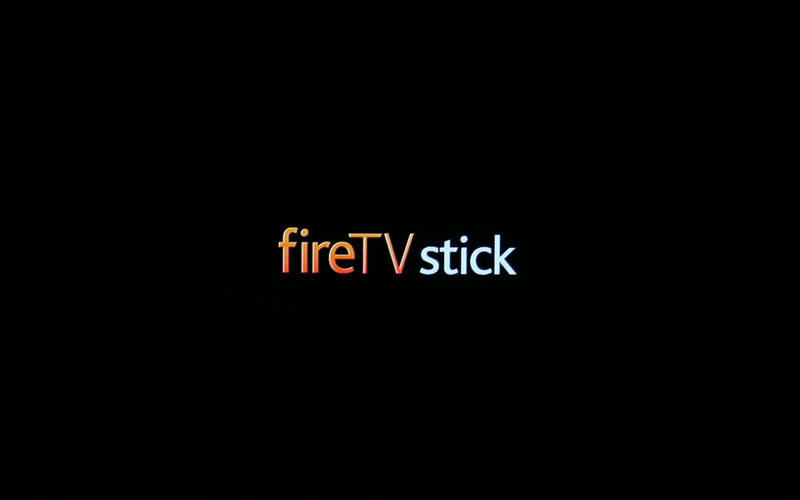
Here’s where you start to configure the TV Stick
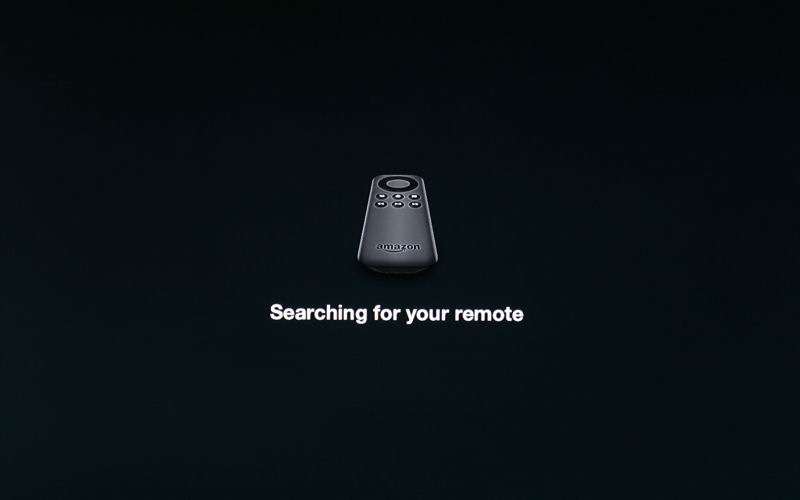
Be sure that your batteries are installed, and press a few keys

Press the play/pause key to start configuration
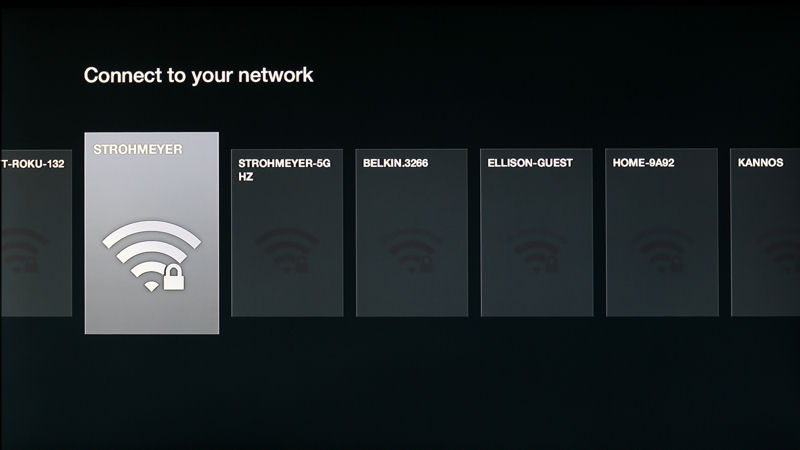
Select the name of your wireless network
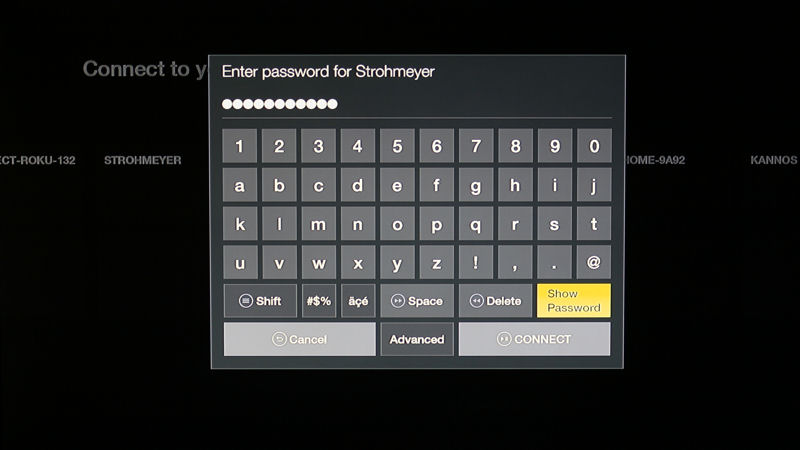
Enter the wireless password for your network. You can press the Show Password to display what you typed in.

Pressing the Connect key connects you to your network

Authenticating to your wireless network
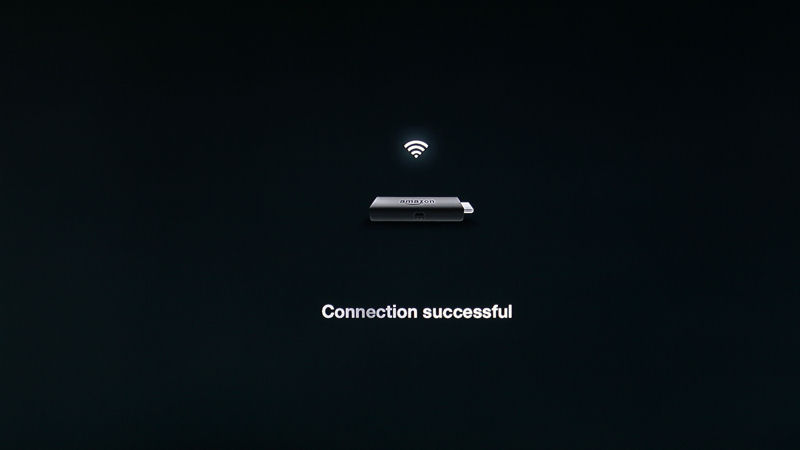
Success!
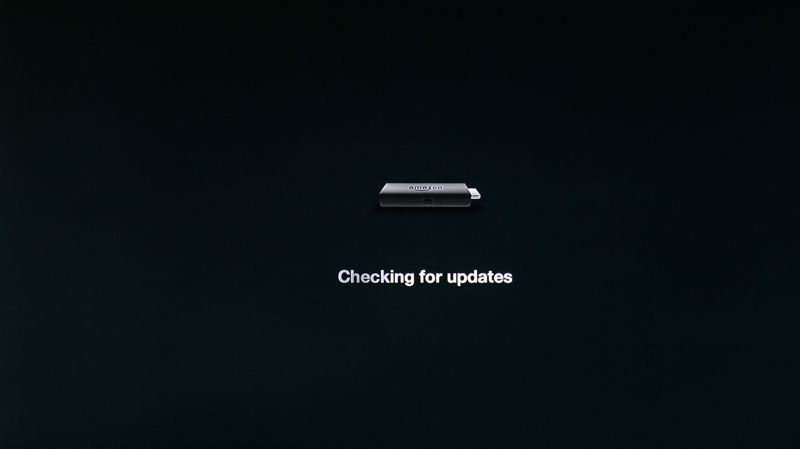
Updates, if any, will be installed automatically
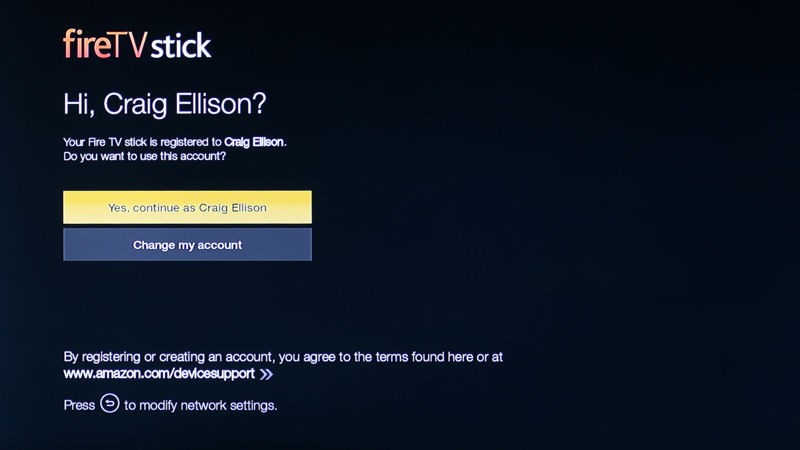
The Fire TV Stick arrives pre-registered
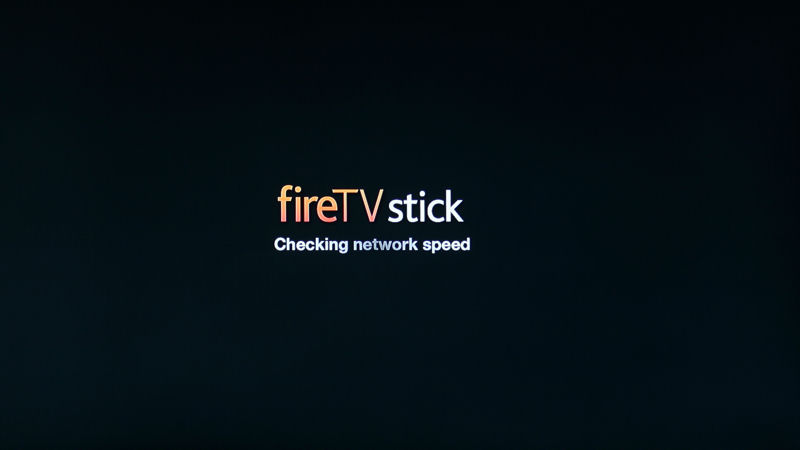
The Fire TV stick checks to make sure that you have adequate bandwidth

A short animated tutorial get you familiar with your TV Stick
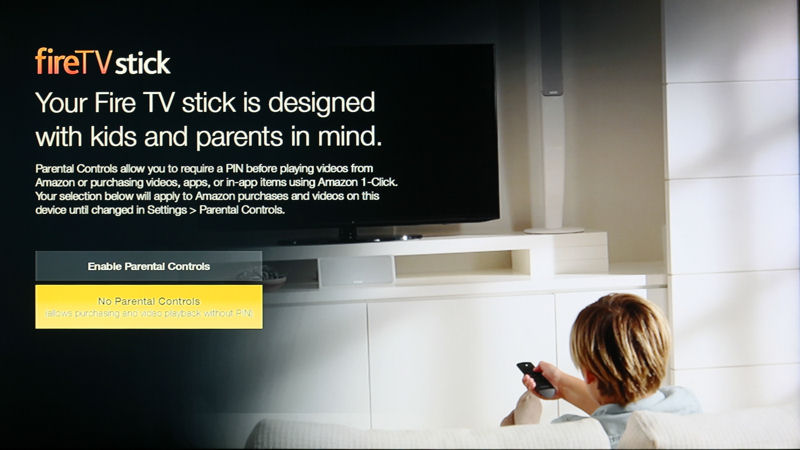
If enabled, a 4 digit will be required before playing videos, purchasing videos or in-app purchases using Amazon 1-Click
Hands On
I was curious to see how the Fire TV Stick compared to the original Fire TV, so I pulled the original product off the shelf and hooked it up to the network. I was surprised there wasn’t a automatic firmware upgrade, since the last time the Fire TV was used was back in April.
After some additional exploration, I finally found a pending update in the Settings > System > About screen. After it finished, I found the same interface as on the Stick. The image below was taken immediately following Fire TV Stick setup.
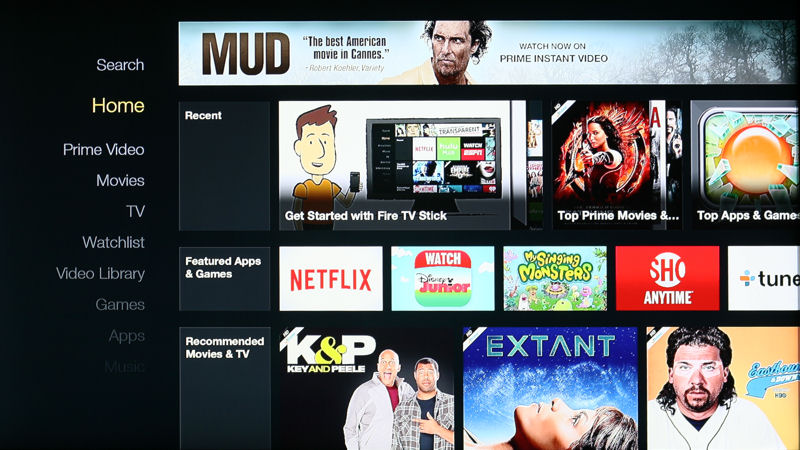
Amazon Fire TV Stick Landing Page
The top level menu now provides easier access to all of the free video content for Prime subscribers. The first entry below Home is Prime Video. The image below shows the first three Prime Video categories: Recommended Prime TV, Recommended Prime Movies and Recently added Prime TV.
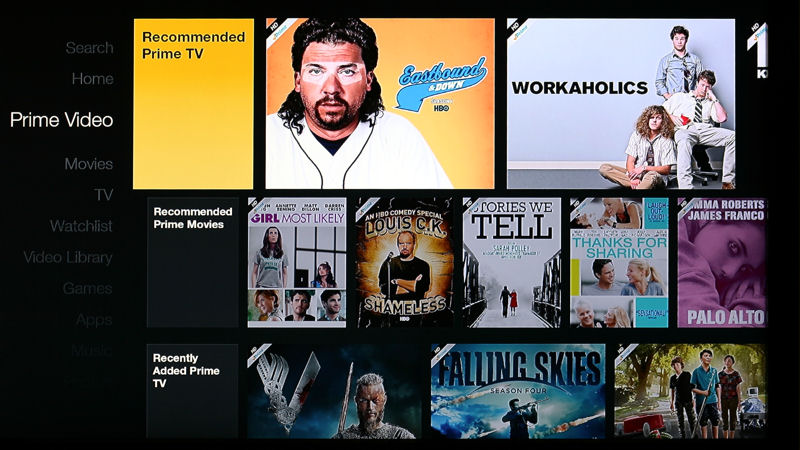
Amazon Fire TV Stick Prime Video menu
There are eight other categories (not shown) that include: Recently Added Prime Movies; The HBO Collection on Prime; Prime Member Exclusives; Top TV on Prime; Top Movies on Prime; Kids’ TV on Prime; Prime TV Genres; and Prime Movie Genres. If you are an Amazon Prime member, this menu is a must have.
The other new menu is “Music”. This menu lets you access music you have stored in the Amazon cloud, music that you have purchased from Amazon, your playlists, your artists, your albums and your genres.
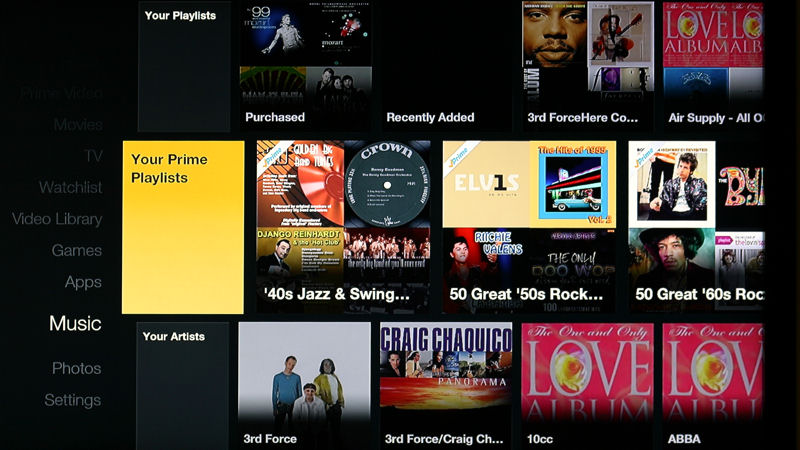
Amazon Fire TV Stick – Music menu
Most importantly, the Music menu provides access to Amazon Prime Music. Amazon claims over 1 million songs and hundreds of “expert-programmed” playlists are available for unlimited ad-free streaming. Amazon Prime Subscribers can add Prime albums and playlists to their music library at amazon.com/primemusic. (You can’t add music from within the Fire TV Stick interface.)
I added quite a few playlists and some albums and was able to stream them without a problem. While I still prefer Pandora, for some Amazon Prime subscribers, Prime Music might be good enough that they could cancel their Pandora paid subscription.
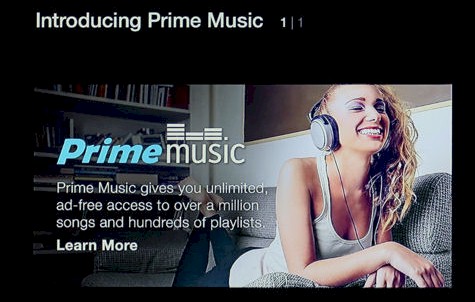
Amazon Fire TV Stick – Prime Music
The balance of the applications and features are virtually identical on the Fire TV and the Fire TV Stick, so the balance of our previous review remains unchanged. I encourage you to look back at that review for individual comparisons of popular apps and how the search feature works.
As with the initial incarnation, search is still limited to Amazon.com and HuluPlus content. For example, if you search for House of Cards, a Netflix exclusive, you’ll find opportunities to rent or buy episodes or seasons either in standard or high definition. Even though there’s a “More Ways to Watch” icon, it doesn’t tell you that you can watch it for free on Netflix if you have a subscription.
Remote App
As noted in the introduction, quite a few people were upset they couldn’t purchase a Fire TV Stick with the Voice Remote. If you happen to be an Android user, you’re in luck. There’s an Android app named “Fire TV” available in the Play store, and I’m sure, also in the Amazon App store.
This app provides remote control access as well as the voice search feature using the microphone in your Android device. Installation is a snap. You just download and run the app. Your phone must be on the same Wi-Fi network as the Fire TV Stick. Upon launching, the app will scan your network and find your Fire TV Stick. The TV Stick will generate a four digit PIN, as shown below, that you must enter into the Android app in order for them to communicate.
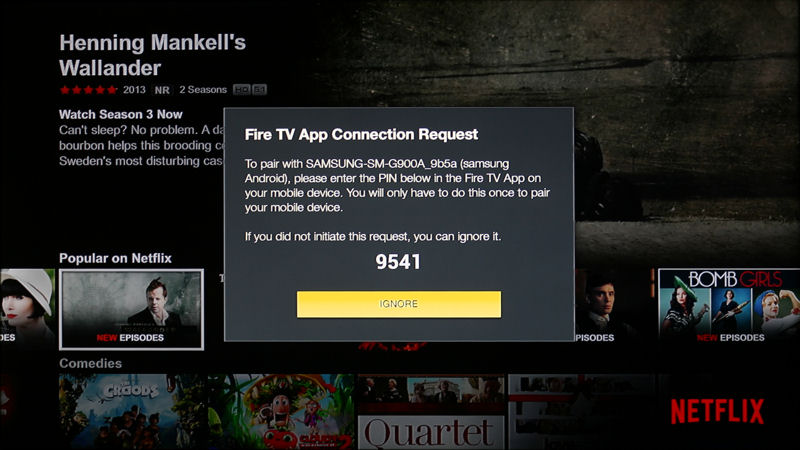
Amazon Fire TV Stick app connection request from Android remote
The shot below shows the corresponding confirmation screen on my Android phone.
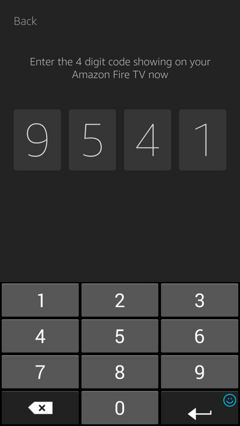
Android PIN confirmation for Fire TV APP
The user interface for the remote app is fairly simple. In the center, there’s a large touch pad area. You swipe left, right, up or down to navigate and tap the screen to select. Icons corresponding to the navigation keys on the remote are located at the bottom of the screen. You can also pop up a virtual keyboard – a handy feature for when you have to enter login credentials for your subscription services.
To use the voice search feature, you just tap/hold and drag down the microphone icon at the top of the screen and start dictating. Both the remote app and the TV screen will show a “listening” message while you are dictating. When you release the microphone, the Fire TV Stick sends your request to the cloud for interpretation.
In my tests, the voice search using the remote app on my Android phone worked just as well as voice searches on the Fire TV using the Voice Remote. I was surprised at how fast and responsive the UI was. There was no noticeable latency between actions on the remote and responses on the screen.
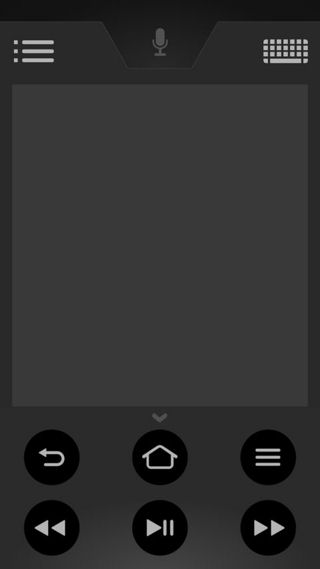 .
.
Android user interface for Fire TV Stick Remote App
Performance
I tested the Amazon Fire TV Stick my wireless network attached to an AC1900 class D-Link DIR-880L router on the 2.4 GHz band. My typical speedtest.net speeds are in the range of 100 Mbps downstream and 10 Mbps upstream (today measured at 126.2 down/12.4 up), so I didn’t really expect to see any performance issues while streaming HD content.
In fact, tested HD media from Netflix, Hulu Plus and Amazon Prime all streamed without jitter or pausing on both platforms. Content from the three services delivered HD quality, uninterrupted streams. Streaming video from Amazon Prime through the Fire TV Stick started almost instantaneously thanks to Amazon’s ASAP feature. Other services took 4-5 seconds for the initial buffering.
Closing Thoughts
It’s hard to believe such great sound and video can come from a device not much larger than a standard-sized USB flash drive. But the Amazon Fire TV Stick delivers both and via wireless connection, too. That said, the Stick shares the weaknesses of its Fire TV predecessor, most notably its crippled search feature that still only works for Amazon and Hulu Plus content.
Fire TV also still lags Roku in app count even though Amazon has rearranged categories and added new ones for a total of 15 categories and 366 apps. While that represents a lot of growth for the Fire TV platform, it’s still far short of the over 1200 “channels” claimed by Roku. (Of course quantity of channels is quite different than quality…)
The voice search feature on Fire TV stick worked very well, just as it did on the Fire TV. In contrast, Roku’s search feature, which also supports voice from its Android and iOS apps, works equally well and supports at least MGo, Vudu, Netflix and Hulu Plus in addition to Amazon. Amazon also doesn’t yet have an iOS app for Fire TV.
As I concluded in the Fire TV review, I prefer the user interface on the Roku devices. I like having a home screen arranged with just the apps (or channels as Roku calls them) arranged just the way that I like them. About the only home screen entry on the Fire TV Stick that comes close is the “Recent” menu that shows recently used apps and recently played content.
Overall, I like the Amazon Fire TV Stick. It provides a good way of browsing “free” content that I’m already paying for with my Prime subscription. About the only people for whom the original Fire TV is worth the extra $60 are those who need its optical audio output, Ethernet network connection and prefer talking into their remote vs. an Android device for voice search.
I didn’t look at gaming apps at all in either the original or this review. But other reviewers have noted that only around half the games available for the Fire TV are available for the Stick. And the games that are available run more sluggishly on the Stick’s dual-core processor vs. the original Fire TV’s quad-core. So if you want gaming on your Fire TV, skip the Stick and go with the original.
If you’re thinking of the Fire TV Stick as a stocking stuffer, you’re out of luck, though. Amazon is sold out for the 2014 holiday season and currently projects the Fire Stick TV back in stock on January 15th, 2015. At $39, if you’re an Amazon Prime subscriber, the Fire TV Stick is a bargain – especially if you have Android device to use the remote app. Otherwise, I’d spend the extra $10 and buy the Roku Streaming Stick.
